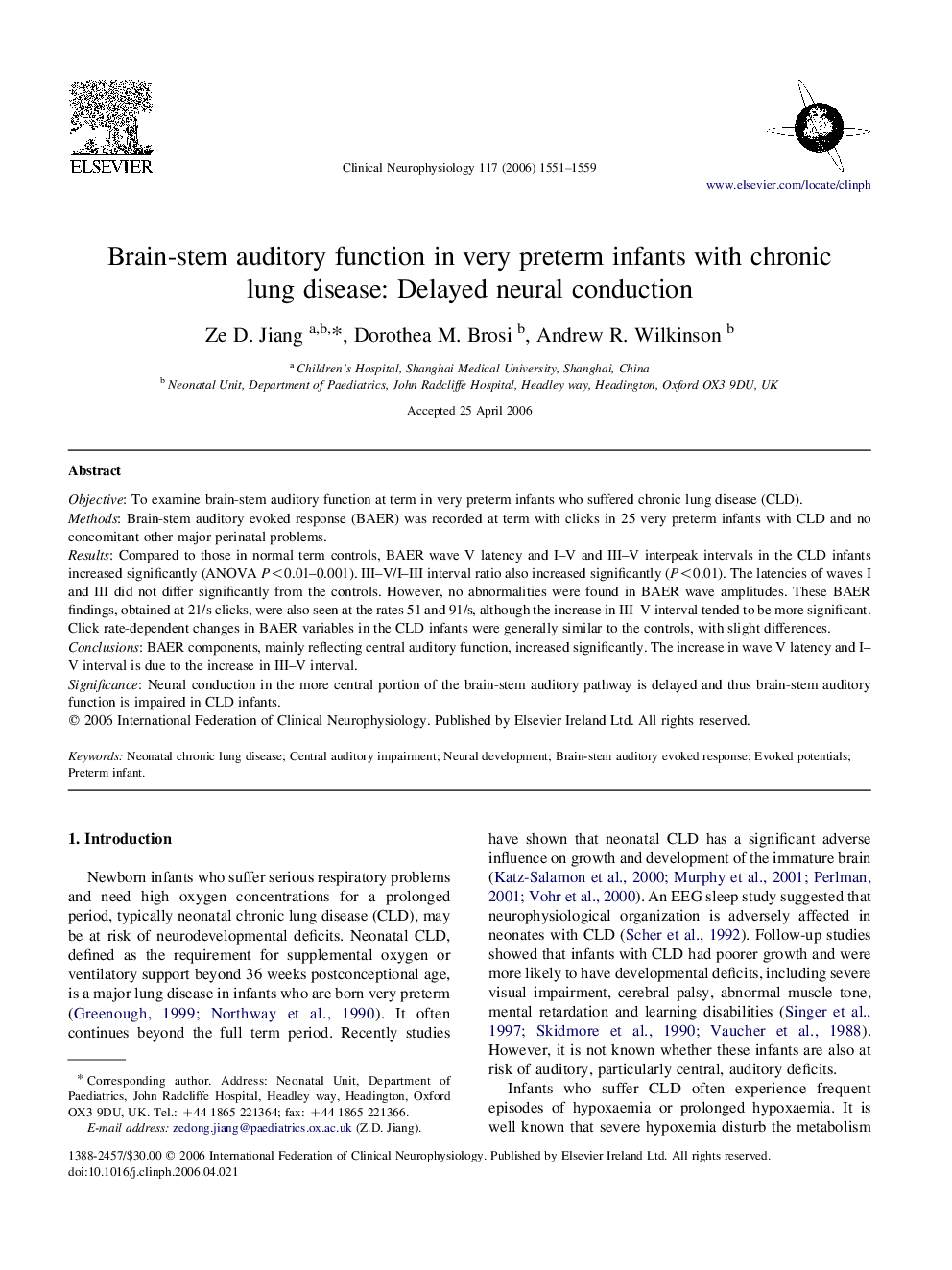| Article ID | Journal | Published Year | Pages | File Type |
|---|---|---|---|---|
| 3048111 | Clinical Neurophysiology | 2006 | 9 Pages |
ObjectiveTo examine brain-stem auditory function at term in very preterm infants who suffered chronic lung disease (CLD).MethodsBrain-stem auditory evoked response (BAER) was recorded at term with clicks in 25 very preterm infants with CLD and no concomitant other major perinatal problems.ResultsCompared to those in normal term controls, BAER wave V latency and I–V and III–V interpeak intervals in the CLD infants increased significantly (ANOVA P<0.01–0.001). III–V/I–III interval ratio also increased significantly (P<0.01). The latencies of waves I and III did not differ significantly from the controls. However, no abnormalities were found in BAER wave amplitudes. These BAER findings, obtained at 21/s clicks, were also seen at the rates 51 and 91/s, although the increase in III–V interval tended to be more significant. Click rate-dependent changes in BAER variables in the CLD infants were generally similar to the controls, with slight differences.ConclusionsBAER components, mainly reflecting central auditory function, increased significantly. The increase in wave V latency and I–V interval is due to the increase in III–V interval.SignificanceNeural conduction in the more central portion of the brain-stem auditory pathway is delayed and thus brain-stem auditory function is impaired in CLD infants.
